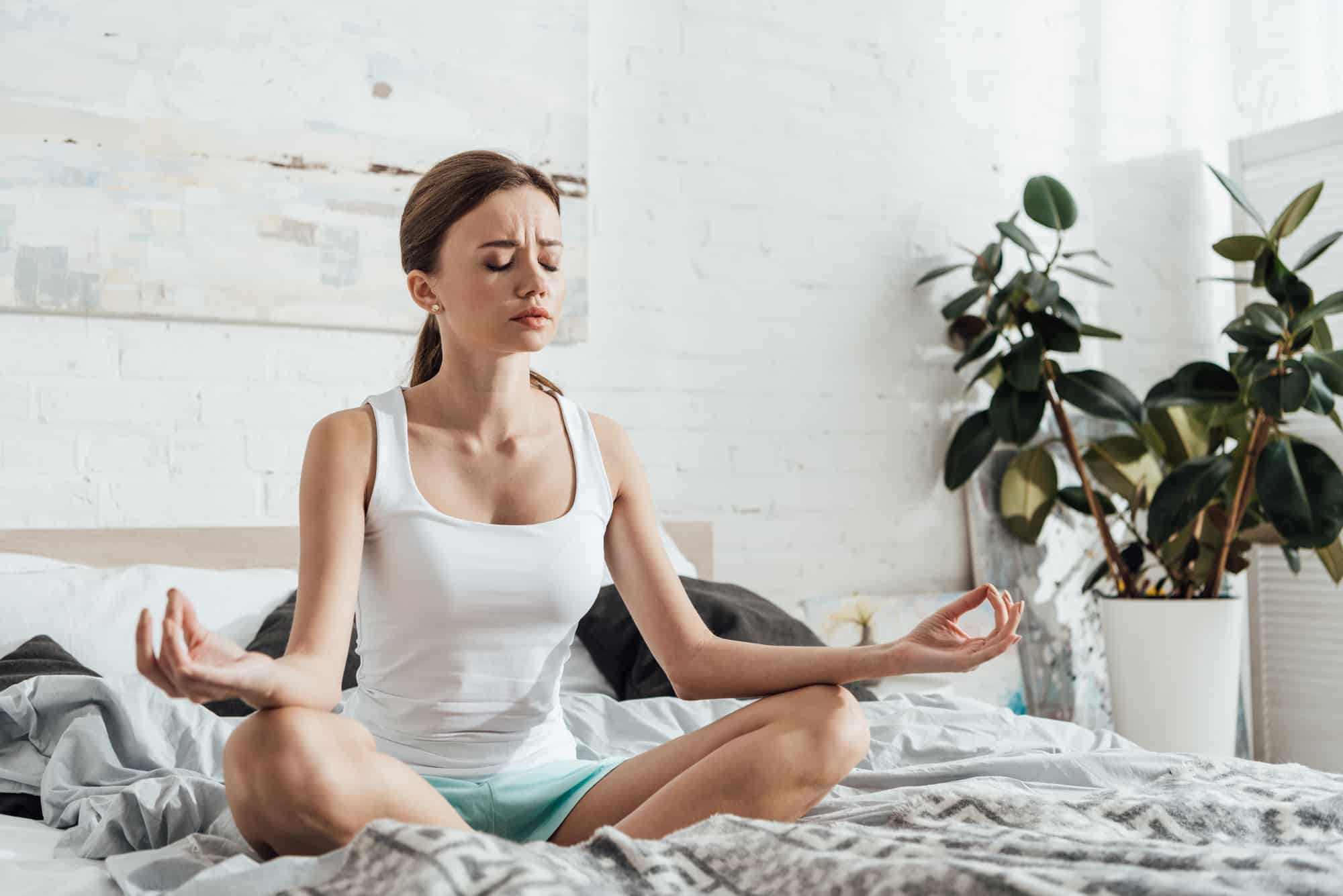People typically take yoga as something that is all about good vibes, light, and little Buddhas flying around you. It’s rarely spoken about the negative yoga aspects.
In fact, there are some creepy things about yoga you should be aware of.
If I’ve got you intrigued enough, check the not-so-good outcomes of yoga practice below.
You Risk Getting a Trauma
The first that comes to mind as a negative side of yoga – is the risk of getting an injury.
Not all yoga poses are dangerous. Two cases lead to injury in yoga: a) pose is practiced incorrectly and b) pose is executed too early. And voila, you’re in pain and suffering.
The most common areas at risk are the neck, back, and shoulders. These injuries can be quickly gained by doing Headstands, Wheel pose, or practicing Chaturanga without proper alignment and enough muscle strength.
Mostly, this happens if you approach yoga as a competition which is not a suprise. Trying to make it faster, better, and be successful on the mat may not match your body possibilities.
Is there anything I can do about it? Professional instructor and progressive increase of the asana complexity will help you not encounter this yoga downside.
Fast Kundalini Growth Makes You a Little Bit Nuts
Among the main adverse effects of yoga and meditation practice are panic attacks, hallucination, and depression. These mental symptoms can be accompanied by physical ones such as increased heart rate, sweating, high blood pressure, etc.
Why can such happen? Yoga is a practice that works not only with your physical body but with your spirit and energy. According to ancient yoga texts, postures and breathing techniques help awaken creative energy every person is born with – called prana, kundalini, or qi (chi) in different sources.
Also, yoga helps unblock the central energy channel (Sushumna – matches the spine in a physical body) and centers located on it (known as chakras – match pelvis area, stomach, heart, throat, etc.). All the yoga practice aims to do this smoothly. But if accidentally the prana force is unblocked before you are ready to carry it inside and transfer, your mind may not be able to bear it.

How to avoid this? The cautious practice of yoga under the supervision of an experienced guru or well-trained instructor can protect your mental health. Do not try to practice pranayamas before you master simple asanas. Do not meditate the whole day before your back is ready for a long time in stillness.
What Are Mudras in Yoga: Ultimate Guide
Depending on your energy “container,” you may need years and years of yoga to make it flow evenly and without any harm done.
Mental Boredom Kills the Progress
At some point in your yoga journey, you may find yourself going through identical sequences every day. Depending on the nature of your practice, this can be a good or bad thing. Some yoga sequences are designed for your mind to get bored. And that is very helpful if you want to fight with the continuous thoughts hurricane in your head.
But on the other side – your practice may lack development. Repeating the same poses day after day makes your muscles rigid. Soon body gets used to the movement range and load and won’t grow strength and flexibility as there is no need for that.
If you do yoga at home using the same program – it’s time to find new poses to master. If you practice with an instructor or a group – question your instructor’s goals.
Your EGO Tricks You
On the opposite to the previous paragraph, some people are exercising yoga too much. If you feel like you need a day off after a yoga session, then maybe you are pushing your body above its limits. So, I would be wondering what the reason to do so is?
Often yogis report fatigue after a fast-paced or hot yoga class. These well-marketed exercises may not suit all. So your responsibility is to listen to your body to understand if this yoga style works for you. The same goes for the pace of the yoga session.
It’s easier to follow your speed in individual training or home practice. If you use video lessons for training, it’s not necessary to follow the speed of the video. You can simply put it on stop and take several minutes’ rest in a Child’s pose if you feel the need for it.
In a group yoga class, you will be trying to adjust to the group’s rhythm set by the instructor. However, even there, you may take breaks. Also, feel free to choose what exercises to do and what to skip depending on your body’s signals.
You Can Miss the Real Life
In recent years, eastern practices have flooded the western market. There is nothing bad about eating healthy food and being mindful of how you live. But if sitting in Lotus pose and chanting mantras takes most of your day, maybe there is something wrong.

Yoga should be a natural part of your life and not its substitute. So check if you are not hiding from real world in a yoga studio.
You Are at Risk of Meeting a False Guru
Today is relatively easy to get a certification as a yoga instructor. And not all schools and training centers monitor the quality of the education they provide—the same thing with yoga studios that hire unprofessional instructors.
Not only this but also that all instructors are just humans, and they can make mistakes, be pushy or break the healthy teacher-tutor boundaries. Women made numerous complaints about sexual abuse in a yoga class. So, if you feel gurus or other people’s actions in a yoga studio cause discomfort, pain, or insult you in any way, start an open discussion about this. And for sure, it’s ok to leave the class if necessary.